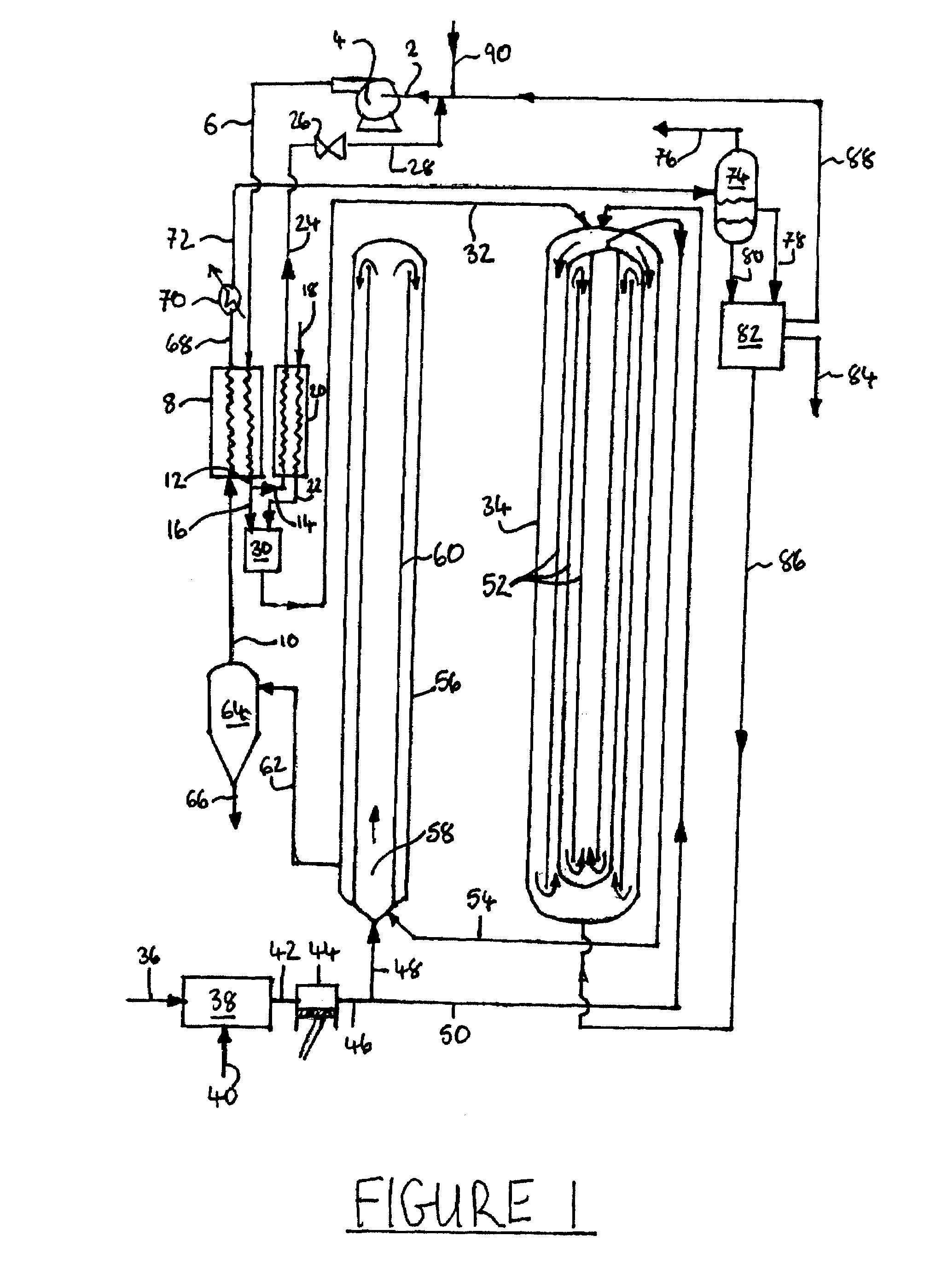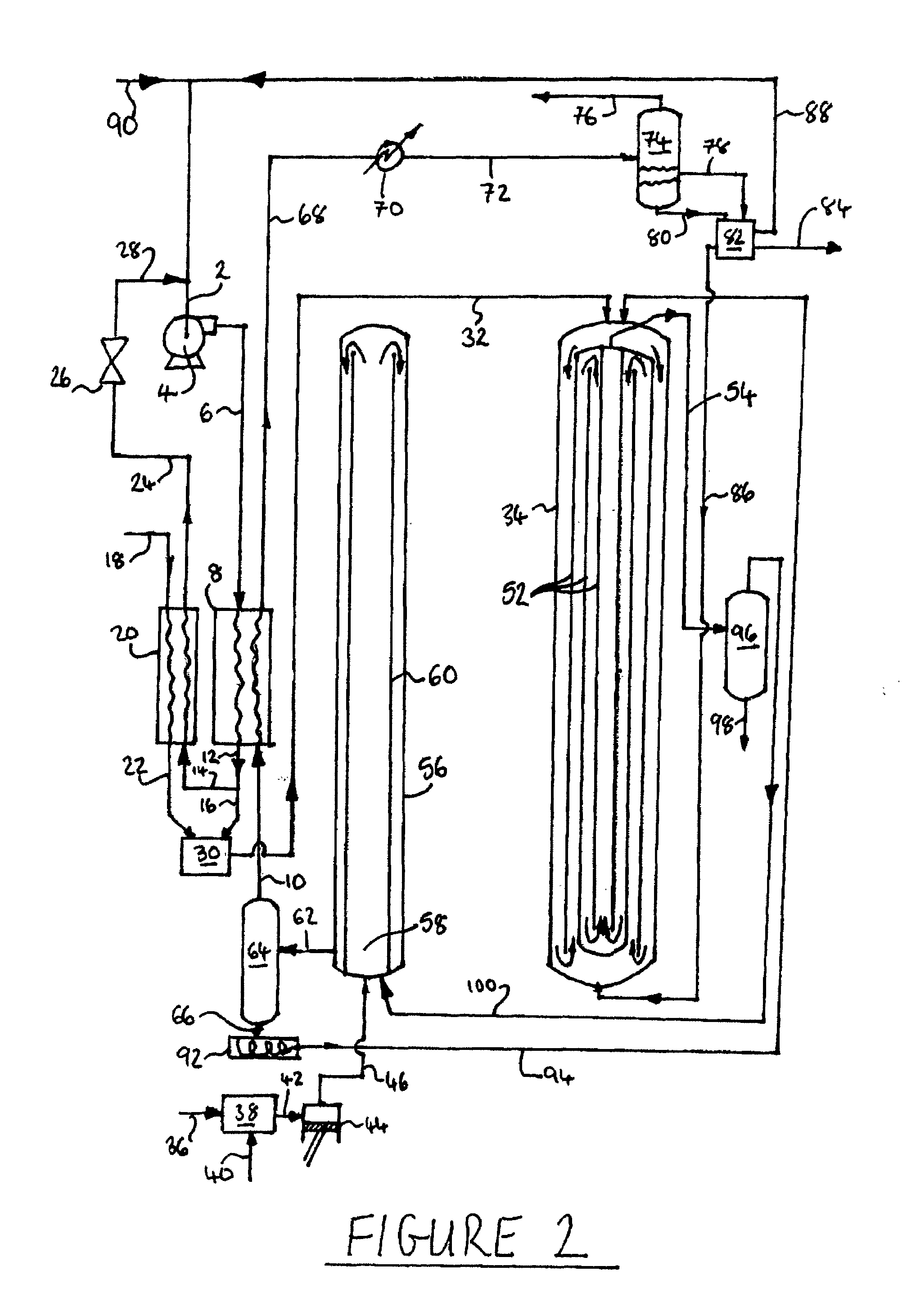Process and apparatus for upgrading coal using supercritical water
a technology of supercritical water and process, applied in the direction of supercritical condition process, combustible gas production, bulk chemical production, etc., can solve the problems of indirect coal combustion that requires expensive means, process adds significantly, around 40%, to the cost of generated electricity
- Summary
- Abstract
- Description
- Claims
- Application Information
AI Technical Summary
Benefits of technology
Problems solved by technology
Method used
Image
Examples
example
[0119]Studies have been carried out in a pilot scale reactor system to determine the proportion of COM removed from coal during LTDC with SCW.
[0120]A 50 wt % slurry of Russian brown coal (grade B2) in water was prepared from 513.3 g coal (dry basis) containing 461.1 g of COM and 52 g coal ash. The empirical formula of the COM in the coal was CH0.825O0.21N0.009. About 25 wt % of the coal particles in the slurry had an average diameter from about 40 μm to about 50 μm and about 75 wt % of the particles had an average diameter from about 200 μm to about 315 μm. The slurry also contained about 0.75 wt % NaOH. All amounts are based on the final weight of the slurry. The slurry at a temperature of 300K was introduced into a reactor at a temperature of 665K and at a pressure of 300 bar using a positive displacement pump. The slurry was exposed to SCW for no more than 15 s. The product mixture was then quenched, allowed to cool, de-pressurized and then analyzed. The total organic products we...
PUM
| Property | Measurement | Unit |
|---|---|---|
| temperature | aaaaa | aaaaa |
| temperature | aaaaa | aaaaa |
| temperature | aaaaa | aaaaa |
Abstract
Description
Claims
Application Information
 Login to View More
Login to View More - R&D
- Intellectual Property
- Life Sciences
- Materials
- Tech Scout
- Unparalleled Data Quality
- Higher Quality Content
- 60% Fewer Hallucinations
Browse by: Latest US Patents, China's latest patents, Technical Efficacy Thesaurus, Application Domain, Technology Topic, Popular Technical Reports.
© 2025 PatSnap. All rights reserved.Legal|Privacy policy|Modern Slavery Act Transparency Statement|Sitemap|About US| Contact US: help@patsnap.com



